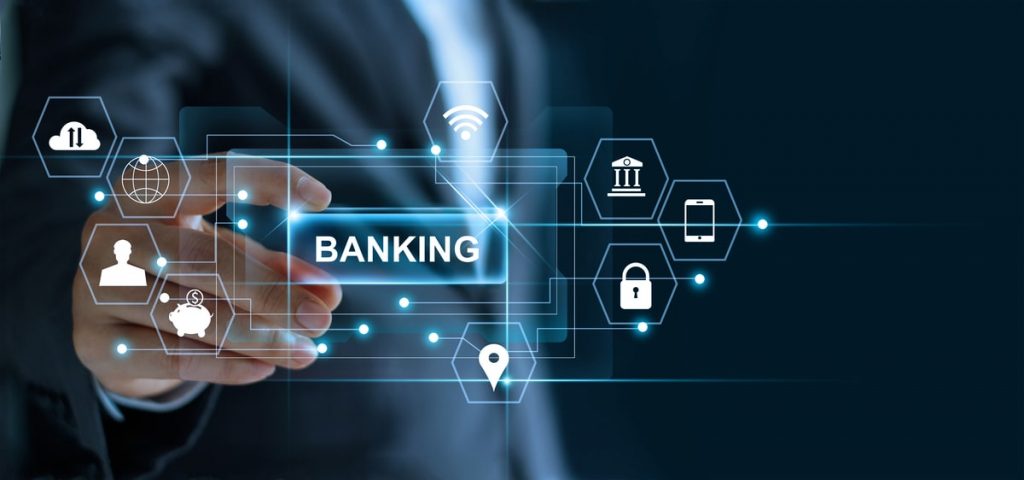Behavioural science can explain the multi-billion pound digital banking boom. The same rules can also apply to elearning.
Future historians will remember the 21st century as the era of digital upheaval (unless climate change continues to be avoided by world leaders). We’re all witness to the digitisation of practically everything, and most of us appreciate it. Startup banks such as Monzo, Starling and Revolut, are shaking up the banking sector by pushing a digital-first strategy. But why are consumers buying into these disruptive digital banks? Is there more to this than an infatuation with technology? And will our answers be relevant to the elearning industry?
Our area of expertise is to use insights from behavioural and neuroscience to analyse behaviour. We find the intrinsic motivation for learners to increase engagement, productivity and skills acquisition. So we thought we’d look at the rapid growth of these digital banks through that lens. In fact, many of these factors also apply to a successful digital learning experience. Let’s look at them both together.
Make it easy
These disruptive banks emphasise convenience. One of the most common reasons people buy new products is that the experience is faster, easier, or more satisfying to complete.
Not having to get up from your sofa to set up a bank account is a very enticing prospect. As research has shown, there is positive correlation between reducing the effort required to complete an action and an increase in completion rates. Monzo have integrated this thinking into their bank transfer feature. Gone are the days of memorising account numbers and sort codes and reciting them out loud until your traditional banking app loads – or, god forbid, visiting a bank in person.
Digital Learning offers a similarly hassle-free experience. By getting rid of face to face training sessions and offering mobile learning, completing a mandatory course requires less effort from the learner. It can be done from their mobile phone on their train commute home, or on their desktop to break up the working day. But just making it convenient and faster doesn’t cut it. There are other things at play – the whole experience has to be easy, fun, motivating and transferable to the workplace. This is where the behavioural science insights really come into play and where a bespoke experience is needed to really make a transformational change in the business.

Make it timely
Another unique selling point of these digital banks is the time that they save. Research shows that we are more influenced by costs and benefits that take effect immediately than those delivered later.
With digital banks, you receive a push notification instantly after you’ve tapped your contactless card. Despite the heart-wrenching feeling of watching your money whittled away, consumers enjoy being able to keep track of exactly where their money is going. This push-notification feature also means that, in the case of theft, you would immediately know to freeze your card before any further damage – another innovation.
While we can’t fight crime, elearning takes advantage of the human preference for immediacy. Digital learning provides immediate acknowledgement when you complete a course, and potentially instant accreditation at the end. But the real gratification from digital learning comes into full effect if you can put learning in the work flow or just in time. This is where point of need tools such as our chatbot or Saffron eaSe really take advantage of this need for immediacy. They allow learning to be synchronous with working; creating confidence, increasing productivity and enabling engagement as well as time and space for creativity and innovation.
Make it reactive
There is often a gap between one’s intentions and actual behaviour. A proven solution to this is prompting people to identify barriers to action and develop a specific plan to address them. With digitised banks, this can take the form of a ‘savings pot’ that rounds up your purchases and saves the excess. For digital learning, this manifests as a Skills Bot. Skillsbot will send you gentle nudges to remind you what you need to practice and to apply it at your very next meeting. It can also provide insights on areas that you’re finding difficult, identifying behaviour and knowledge gaps.
These features would suggest that learners are more motivated to consume digital learning if it offers them immediate results and gratification, as well as helping them navigate around real-time barriers.

Make it attractive
We are more likely to interact with something that is visually appealing. Ways of doing this include the use of images, colour, or personalisation but also use of use and functionality
Monzo generated a lot of interest with their eye-catching cards. In fact, they were originally designed for the beta testing period, with the intention to be replaced with a more traditional design once the trial period was over. But the cards proved so popular that Monzo opted to stick with the hot coral design. This indicates humans’ natural attraction to bright and shiny things.
Science has substantiated that “humans are visual creatures”: the brain can identify images seen for as little as 13 milliseconds. Successful elearning courses must include carefully considered user experience elements. This is recognised but sometimes to the detriment of the learning content being inferior to the “bells and whistles”. At the heart of good learning is good design.
Make it real
It is important to note that even in today’s all-encompassing digital world, human connection has not been totally abandoned. Plenty of studies emphasise the importance of human interaction on brain development and in learning strategies. However, even more studies have proven the benefits of incorporating the two together. The US department of Education stated in 2017 that blended instruction has been more effective than conventional face-to-face classes.
Even these digitally driven banks haven’t eliminated human touch completely. Monzo’s customer service has proven to be excellent, precisely by promising effective communication with their consumers at times of potential crisis. Monzo delivered a masterclass in dealing with customer crisis by informing customers of data breaches with both British Airways and Ticketmaster, in September and June 2018 respectively. Reviews claim that it is precisely this swift customer service which contributed to Monzo’s massive growth rate.
For similar reasons, blended learning approaches, especially those that are more creative than just a combination of instructor led and digital, can truly lead to transformational behaviour change.

Conclusion
Since the year 2000, the elearning industry has grown 900%. Over a shorter but more recent growth period, digital-first banks have an 88% satisfaction rate today compared to 12% in 2018. We’re putting this down to a shared ability to harness behavioural insights in a world that relies on technology more and more. Whether it be in banking or elearning, combining technological innovation and behavioural insights is key to surviving this age of digital-first content and increasing consumer engagement and satisfaction.
If you want to hear more about how behavioural insights can benefit your organisation, get in touch here and we’ll advise you on how to transform your training strategy.





